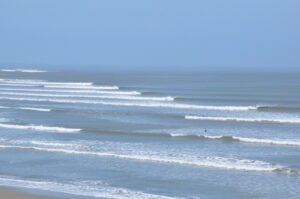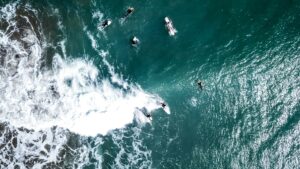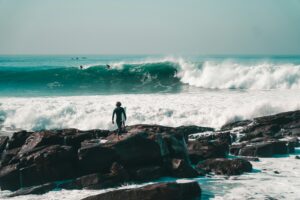The Rumours…
Our story begins in 1965, when Hawaiian professional surfer Chuck Shipman is flying back from a surf contest in Lima, Peru. He’d flown this route a handful of times, and on this particular occasion, Peru’s coastline, usually shrouded in mist, was clear. With his nose pressed against the aeroplane window, Chuck spotted what looked like the dream point break set-up… impossibly long, peeling along a barren desert headland.
He tried to match his position with locations on the map, but much of the coastline was barren and unnamed. The closest place he could spot to where the wave “might” be was a valley, a few kilometres to the south. Its name? Chicama.
During the contests in Lima, Shipman found himself intrigued by the Peruvian culture and quickly befriended some of the local Peruvian surfers. They bonded, while competing and surfing the breaks around Lima, and naturally began discussing the potential for surf around Peru’s 2000-mile coastline.
In 1966, rumours of this wave began to spread among surfing circles, and three expeditions to find the mystical Chicama took place. However, all three trips were unsuccessful and no one could find the break. Back then, finding the place was a maze. There were no roads, so signposts and the only access was via sugar field dirt tracks.
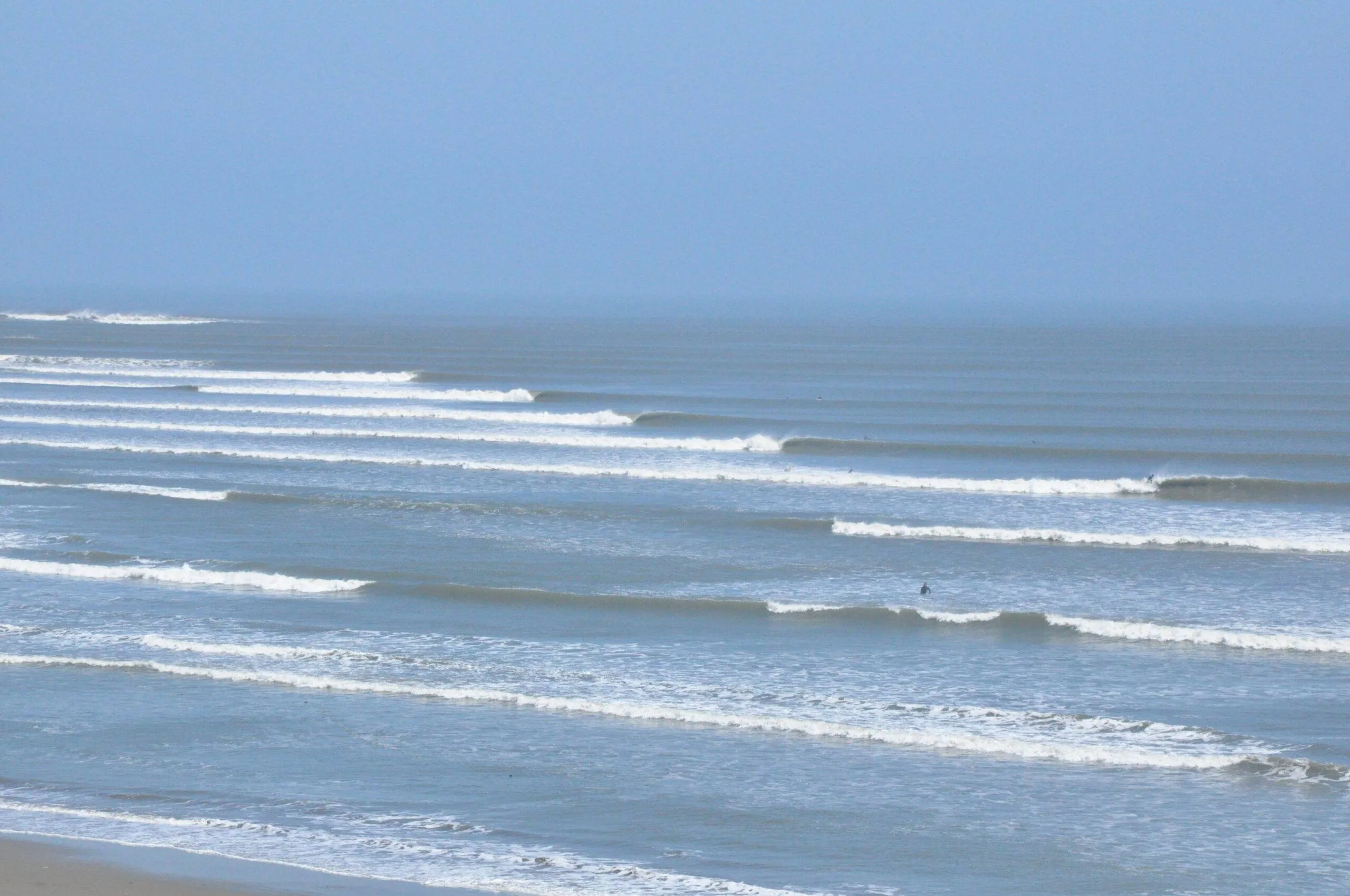
The Discovery of Chicama
But then came Carlos “Flaco” Barreda. One of the Peruvian pros Chuck had befriended during contests. They’d discussed the wave and its potential on numerous occasions and they estimated the wave was located somewhere between the cities, of Chimbote and Chiclayo.
So Carlos took it upon himself to find it. He assembled a crew of friends and surfers, one of whom owned a new VW Beetle (they needed a good vehicle), and the group consisted of other legendary Peruvian surfers who’d already pioneered some of the other famous breaks around the country.
So with two cars, their provisions, and surf equipment, the crew headed north from Lima, in search of an oceanic unicorn. They drove and drove (if you’ve been to Peru, you’ll know first-hand how vast the country is), camping and surfing their way up the coast.
They found waves on the way and the trip had all the ingredients of a classic surf trip. And while they surfed several fun points and beachies en route, they didn’t find the aquatic banquet they were looking for.
They kept driving until a promising-looking track led them toward an inlet. In proximity to where they thought the break could be. They motored on down the track full of hope and anticipation that this could be the road that led them to the point break of their dreams.
The crew reached the ocean and arrived at the inlet only to see a nearly flat ocean. There were waves, but it was tiny and nowhere near the waves they’d been hoping for. At one stage, it dawned on them, that the wave Chuck may have seen from the plane, was Huanchaco–a good but already well-known left point close to Trujillo. Despite their sudden realisation that the wave might be nothing but a myth, the hope that they could find a dream wave, kept them going.
After driving through Trujillo and into the small town of Paijan, they stopped to ask the locals about a long wave. Ondas largas? El Muelle? Donde? (Translation: Long waves? The pier? Where? ). It was with nods and smiles from the locals in Paijan that gave the guys a renewed sense of hope that they were in the right place and that the wave they were searching for might exist after all. And better still, they were close.
They turned out of Paijan and followed a bumpy dirt track toward the ocean. After half an hour, they reached a town called “Puerto Malabrigo”, a fishing village in the middle of nowhere. They drove through town, with excitement and anticipation building… Then they reached the ocean and excitement reached tipping point.
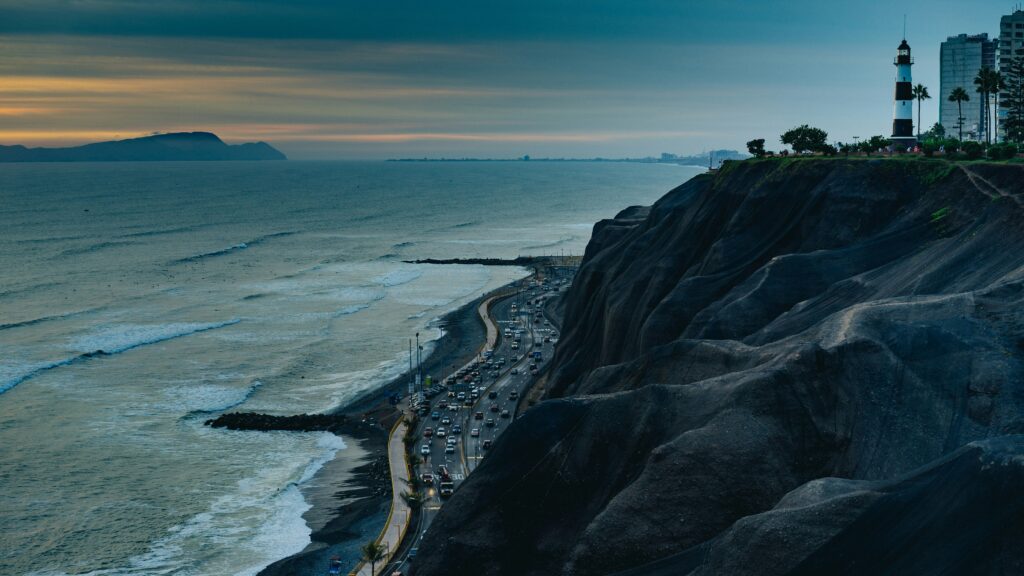
The crew of six stopped and stared at the ocean, and jaws hit the flaw. The ocean was ribbed with lines to the horizon and 6ft left-handers peeled from as far as they could see in the distance and ran into the pier in town. Hoots and hollas filled the air and no one spoke, they all just watched on in disbelief.
Perfect, empty and everything they’d dreamed of. In fact, it had far exceeded their expectations and before they knew it, they were waxing up and running up the point for their first taste of the mystical Chicama. The crew surfed some stupidly long waves and while one of them had actually taken a camera to document the waves should they find it, the waves were so long that memory cards filled up quickly and they couldn’t film the waves from start to finish.
It’s a common misconception that when the first waves were ridden at Chicama, the swell was tiny, but as you can read in Carlos Barreda’s account of the discovery, the waves were in fact, firing that day. They surfed all day and stayed in town for a few days sampling some of the longest waves they had ever ridden. I can’t even imagine what a feeling that must have been, to discover a wave like that! So fricking cool.
Back in Lima, their tales of the wave were met with scepticism and accusations of exaggeration and over-froth by friends. But that soon changed as soon as the film was developed from the trip and the images certainly didn’t exaggerate anything.
As is the natural order of most wave discoveries, word got out and surfers from all over Peru started driving to Chicama to get a taste themselves. Then later, surfers from around the world began flocking to Peru to surf what would later become known as the longest wave in the world.
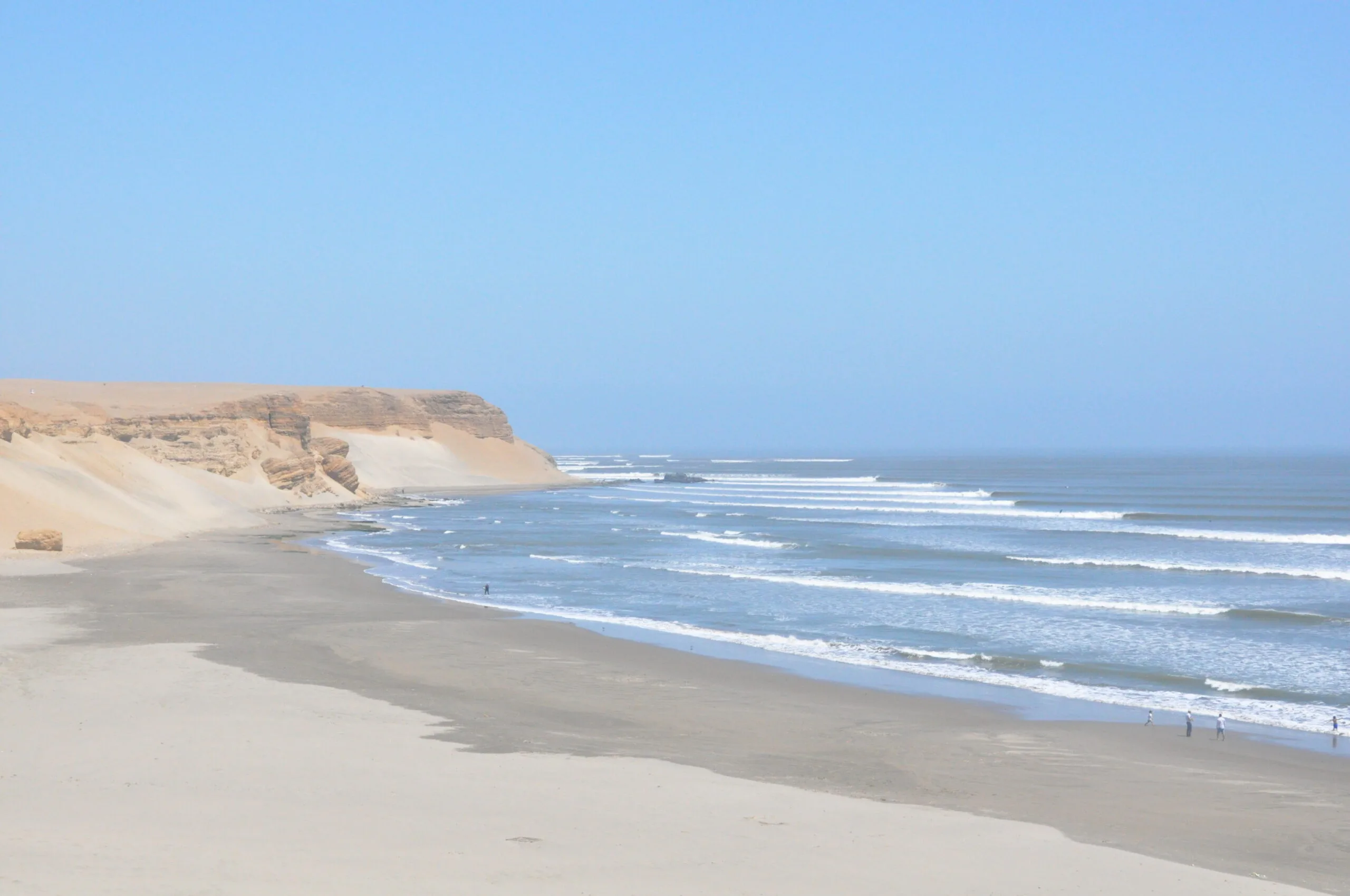
What’s the Wave Actually Like?
Today, the waves in Chicama are very much the same as they were in the 60s. Studpildy long, very very fun and it’s one of the only places I’ve been to where you can ride a wave for 2 minutes plus!
The wave is tremendously long, with multiple sections. There are actually several points that don’t link up in Chicama, as you can see on the map. But the real magic of the place is all about First Point, which under the right conditions is just a crazy long wave on its own. I ended up doing these massive run-arounds, where I’d surf a wave for ages, I would sometimes fall early, but it’s so long that you do a few turns and then need to just stand there and catch your lungs and legs recover! It’s insane.
The place is crowded, as you’d expect for somewhere so renowned. But it’s one of those places that because it is so long, it’s not an issue. It’s not a condensed line-up and the current is so strong, you can’t paddle against it. The most annoying thing about surfing in Chicama is the boat wake. Most surfers pay to have a boat ferry them back up the point after rides, but a lot of the drivers go close to the waves, so sometimes you get a really good set, but it just has boat wake running up the face.
Chicama town is still pretty basic, there isn’t much to do there apart from surfing, which is cool if that’s all you’re after, You’ll need to go elsewhere in Peru for anything un-surf-related. But there are some nice surf camps there now, where you can stay in comfort overlooking the point. There are also some more affordable places in town. There’s one cheaper hostel. I stayed in a place called Hospedjae la Ola Azul which was pretty sick, close to the wave, and great value for money! There are also a few restaurants and cafes in town!
What’s also cool about Chicama is that the break is protected under Peruvian law, meaning no development that might threaten the wave can happen. (Uluwatu take note). The law “Ley de Rompeintes” meaning “law of the breakers” prevents any development from happening within 1km of the wave, which is really epic to see, although it does mean o matter where you stay you have a long walk up the point haha!
There are 43 protected waves throughout Peru, so it’s cool to see that a country is protecting waves, and knowing the value of such a natural resource for locals and travelling surfers.

